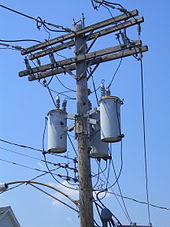Distribution-to-Utilization Voltage Transformers (DTUVTs) are commonly used in electrical power systems to step down high voltage levels to lower levels suitable for utilization. The installation, commissioning, and mounting techniques for DTUVTs can vary based on the specific application and system requirements. Here are some common types of installations, commissioning steps, and mounting techniques with their respective locations:

1. Installation Types:
DTUVTs can be installed in various configurations based on the specific requirements of the power system. Some common installation types include:
- Indoor Installation: DTUVTs are installed within indoor substations or electrical rooms. This provides protection against weather conditions but requires adequate ventilation and space.
- Outdoor Installation: DTUVTs are installed outdoors within weatherproof enclosures. Outdoor installations might require additional protection against environmental elements such as rain, sunlight, and temperature fluctuations.
- Pole-Mounted Installation: DTUVTs are mounted on utility poles, typically along distribution lines. This type of installation is commonly used for rural or remote distribution systems.
- Pad-Mounted Installation: DTUVTs are installed on a concrete pad or platform at ground level. This type of installation is often used in urban or suburban areas where space is limited.
2. Commissioning Steps:
Commissioning involves the process of ensuring that the DTUVT is correctly installed, properly configured, and functioning as intended. Some commissioning steps include:
- Visual Inspection: Inspect the DTUVT for any visible damage during transportation and installation.
- Electrical Testing: Perform electrical tests to verify the accuracy of voltage transformation, insulation resistance, and other performance parameters.
- Connection Checks: Ensure that all connections are properly made and secure.
- Protection and Control Checks: Verify that protection and control devices are set correctly to ensure safe operation.
- Calibration: Calibrate any associated measurement or protection devices as necessary.
3. Mounting Techniques with Location:
Mounting techniques depend on the chosen installation type and location:
- Indoor Mounting: DTUVTs can be mounted on suitable platforms or structures within indoor substations or electrical rooms. Proper ventilation and clearances must be maintained.
- Outdoor Mounting: For outdoor installations, DTUVTs are often housed within weatherproof enclosures mounted on concrete pads or platforms.
- Pole-Mounted: When pole-mounted, DTUVTs are secured to utility poles using appropriate brackets or clamps. Care must be taken to ensure proper weight distribution and secure attachment.
- Pad-Mounted: In pad-mounted installations, DTUVTs are typically mounted on a concrete pad or platform at ground level. The pad should be properly leveled and anchored to prevent shifting.
It’s important to note that the specific installation, commissioning, and mounting techniques may vary based on local regulations, manufacturer guidelines, and the requirements of the power system. Always consult with qualified electrical engineers and adhere to industry standards when installing and commissioning DTUVTs.

